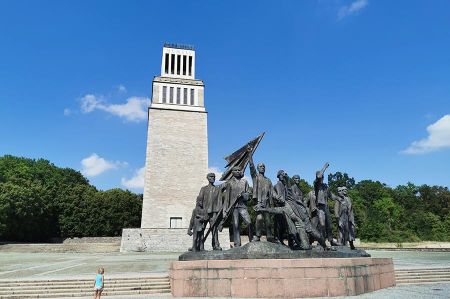Remembering crimes - Buchenwald Memorial Weimar
- Written by Portal Editor
The Buchenwald Memorial was inaugurated 65 years ago on September 14, 1958 as the first major national monument of the GDR. Its design interprets the history of the Buchenwald concentration camp exclusively as a victory of the communist resistance over fascism. Even the Holocaust went unmentioned.
The purpose of the memorial was to provide historical justification for the SED's claim to leadership, which was not democratically legitimate. To do this, history had to be distorted accordingly. An important testimony to the political functionalization of memory and commemoration in the GDR.
Leitmotif: “Through dying and fighting to victory.”
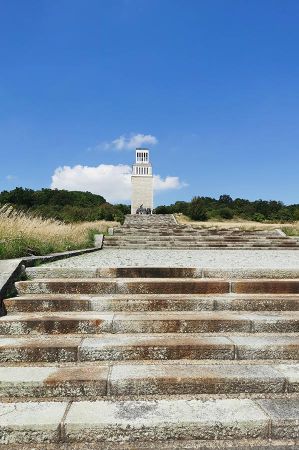 While in 1945 there were various, pluralistically oriented initiatives by surviving prisoners in Weimar and Thuringia for a monument, in the early 1950s all planning was centrally controlled by the SED leadership in East Berlin: the largest part of the former camp with its ambiguous buildings The SED Politburo had it removed so that it would not disrupt the politically desired interpretation, which was far too narrow and did not do justice to most of the victim groups.
While in 1945 there were various, pluralistically oriented initiatives by surviving prisoners in Weimar and Thuringia for a monument, in the early 1950s all planning was centrally controlled by the SED leadership in East Berlin: the largest part of the former camp with its ambiguous buildings The SED Politburo had it removed so that it would not disrupt the politically desired interpretation, which was far too narrow and did not do justice to most of the victim groups.
On the southern slope of the Ettersberg, a monumental monument that can be seen from afar was created among the mass graves from the time of the concentration camp. Its design followed the ideology according to the leitmotif: “Through dying and fighting to victory.” In this narrative, the Holocaust had just as little place as the persecution of Sinti and Roma, homosexuals or Jehovah's Witnesses.
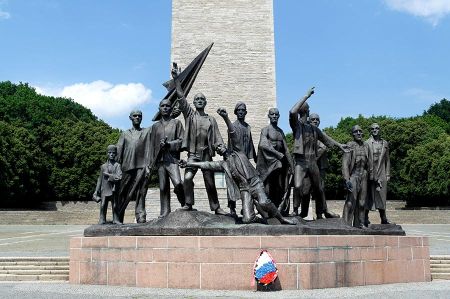 In the complex, which was inaugurated in 1958, the visitor is led along relief steles down into the “Night of Fascism,” which is symbolized by the mass graves integrated into the monument. The memorial builders failed to mention that it was mainly Jewish people who were buried in these graves who arrived there on death marches shortly before Buchenwald was liberated. A “Tower of Freedom” with a bell concludes the monument complex.
In the complex, which was inaugurated in 1958, the visitor is led along relief steles down into the “Night of Fascism,” which is symbolized by the mass graves integrated into the monument. The memorial builders failed to mention that it was mainly Jewish people who were buried in these graves who arrived there on death marches shortly before Buchenwald was liberated. A “Tower of Freedom” with a bell concludes the monument complex.
Fritz Cremer's well-known group of figures of liberated prisoners, placed in front of the bell tower, is intended to symbolize the victory over the SS under the leadership of the Communist Party.
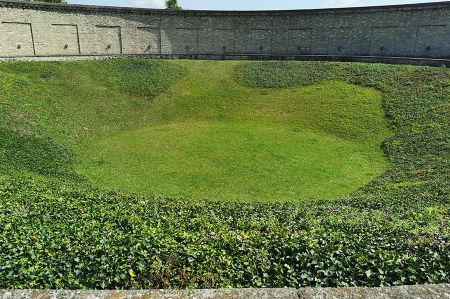 This is the third version of the figure sculpture. The first two drafts were rejected by the SED leadership and Cremer was forced to change them. According to the actual story, Cremer initially showed prisoners who’s will the SS had not broken, but who, given the superior number of SS men, could not have defeated them. This representation did not correspond to the ideological needs of the SED or to the art doctrine of “Socialist Realism”. She was considered too unheroic. The design of the Buchenwald National Memorial and Memorial became influential for the other concentration camp memorials in the GDR.
This is the third version of the figure sculpture. The first two drafts were rejected by the SED leadership and Cremer was forced to change them. According to the actual story, Cremer initially showed prisoners who’s will the SS had not broken, but who, given the superior number of SS men, could not have defeated them. This representation did not correspond to the ideological needs of the SED or to the art doctrine of “Socialist Realism”. She was considered too unheroic. The design of the Buchenwald National Memorial and Memorial became influential for the other concentration camp memorials in the GDR.
The Buchenwald Monument is one of the most important pieces of evidence of the political functionalization of memory and commemoration in the GDR. What is also particularly revealing is the ultimately failed story of resistance against political pressure and for artistic quality that is associated with it. A museum set up next to the memorial in 1999 tells the story. It is an exemplary warning against the political instrumentalization of history and its misuse.
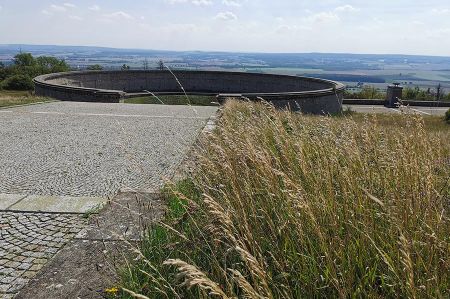 The history of the Buchenwald Memorial in the immediate vicinity of Weimar is characterized by three phases: Buchenwald Concentration camp 1937–1945
The history of the Buchenwald Memorial in the immediate vicinity of Weimar is characterized by three phases: Buchenwald Concentration camp 1937–1945
In July 1937, the SS cleared the forest on the Ettersberg near Weimar and built a new concentration camp. The purpose of the camp is to combat political opponents, persecute Jews, Sinti and Roma, and permanently exclude “community strangers,” including homosexuals, homeless people, Jehovah’s Witnesses and those with a criminal record, from the German “national body.” Buchenwald soon became synonymous with the National Socialist concentration camp system. After the war began, people from all over Europe were deported to Buchenwald. A total of almost 280,000 people are imprisoned in the Ettersberg concentration camp and its 139 subcamps.
The SS forces them to work for the German armaments industry. At the end of the war, Buchenwald was the largest concentration camp in the German Reich. Over 56,000 people die from torture, medical experiments and exhaustion. Over 8,000 Soviet prisoners of war are shot in a specially built killing facility. Resistance fighters form an underground organization in the camp to do the best they can to contain the SS's rampage. Nevertheless, the “Little Camp” becomes the hell of Buchenwald. Shortly before the liberation, thousands of exhausted prisoners died.
Soviet special camp No. 2 Buchenwald 1945–1950
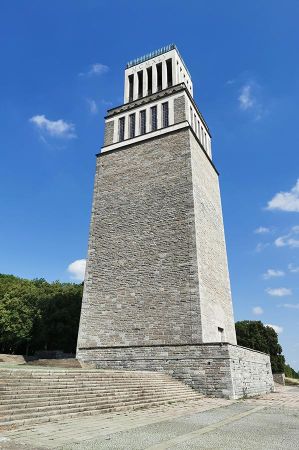 The so-called special camp No. 2 Buchenwald is one of a total of 10 camps and three prisons in the Soviet occupation zone that are used by the occupying power to intern Germans. Since August 1945, the Soviet security service has continued to maintain the existing buildings at the Buchenwald concentration camp.
The so-called special camp No. 2 Buchenwald is one of a total of 10 camps and three prisons in the Soviet occupation zone that are used by the occupying power to intern Germans. Since August 1945, the Soviet security service has continued to maintain the existing buildings at the Buchenwald concentration camp.
Local officials of the NSDAP, as well as young people and denounced people, are primarily interned there. All contact with the outside world is prevented, and no legal proceedings whatsoever take place. Of the 28,000 inmates, over 7,000 died as a result of starvation, especially in the winter of 1946/47. In February 1950, shortly after the founding of the GDR, the camp was dissolved by the Soviets.
Jewish Memorial
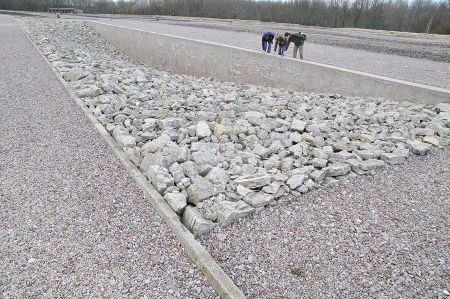 The “Jewish Memorial” was inaugurated on November 9, 1993 on the site of Barack 22, a so-called Jewish block. It commemorates the 75,000 Jewish men and women who were imprisoned in the Buchenwald concentration camp and its subcamps, the 11,800 Jews murdered there and the six million dead in the Holocaust. Lettering: "So that the future generation may recognize the children that will be born, that they will stand up and tell their children." in front of the Jewish memorial, 2022.
The “Jewish Memorial” was inaugurated on November 9, 1993 on the site of Barack 22, a so-called Jewish block. It commemorates the 75,000 Jewish men and women who were imprisoned in the Buchenwald concentration camp and its subcamps, the 11,800 Jews murdered there and the six million dead in the Holocaust. Lettering: "So that the future generation may recognize the children that will be born, that they will stand up and tell their children." in front of the Jewish memorial, 2022.
In order not to change the current appearance of the memorial, the base area of Block 22 was excavated in the competition design and the depression was filled with stones. The stones come from the Buchenwald quarry, where the Jewish prisoners had to do forced labor.
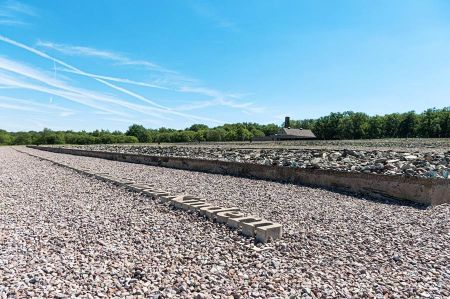 The lowering reveals a wall into which olive tree wood from Israel is cast. The inscription consists of blocks of letters embedded in the ground along its entire length. Like the memorial, it can only be understood by walking around and walking around.
The lowering reveals a wall into which olive tree wood from Israel is cast. The inscription consists of blocks of letters embedded in the ground along its entire length. Like the memorial, it can only be understood by walking around and walking around.
The inscription (Psalm 78:6) in English, Hebrew and German reads: "That the future generation may know the children that are to be born, that they may arise and tell their children." The design comes from the artist Tine Steen and the architect Klaus Schlosser (© Buchenwald Memorial).
Please read as well:
